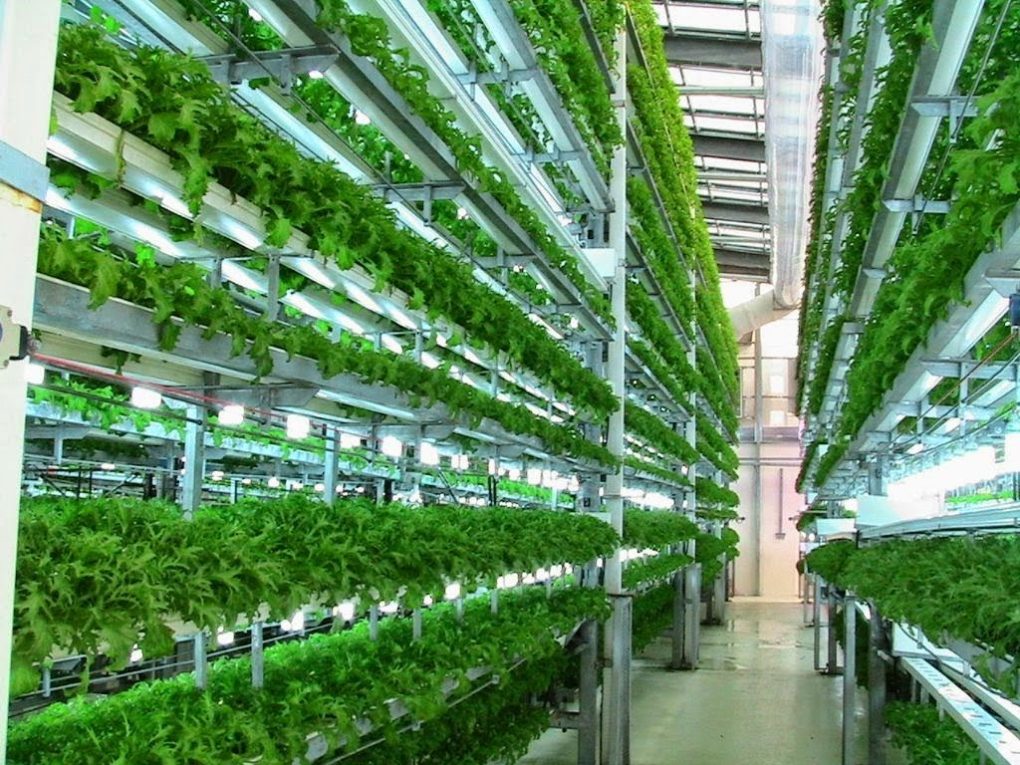By: Alora Hughes, University of Saskatchewan Student
The challenges and advantages of adopting vertical farming
 Food scarcity is a problem facing both agriculture and the world. Population growth, growing incomes, and changes in consumer preferences have resulted in the need for increased food production. To tackle this problem every angle of food production should be considered and implemented. The FAO stated in 2015 that by 2050 our planet will have a population of 9.1 billion people. The current population is 7.7 billion people, which indicates that likely by 2050 the population will surpass the expected 9.1 billion. While the population and their food demands are growing, the amount of land available to produce food on is not. There is a tremendous need for more efficient land use and innovation in agriculture, instead of expanding outward it’s time to expand upward. Vertical farming is an indoor production that maximizes square footage by producing on the vertical, and not just the horizontal. Vertical farming of produce benefits from controlled environmental conditions and the growing environment. Currently, this form of production is focused on leafy greens including lettuce, kale, micro greens, arugula, and a variety of herbs. Vertical farming is likely not the sole answer to solving world hunger, but if used in conjunction with new technology it could contribute to improving food security.
Food scarcity is a problem facing both agriculture and the world. Population growth, growing incomes, and changes in consumer preferences have resulted in the need for increased food production. To tackle this problem every angle of food production should be considered and implemented. The FAO stated in 2015 that by 2050 our planet will have a population of 9.1 billion people. The current population is 7.7 billion people, which indicates that likely by 2050 the population will surpass the expected 9.1 billion. While the population and their food demands are growing, the amount of land available to produce food on is not. There is a tremendous need for more efficient land use and innovation in agriculture, instead of expanding outward it’s time to expand upward. Vertical farming is an indoor production that maximizes square footage by producing on the vertical, and not just the horizontal. Vertical farming of produce benefits from controlled environmental conditions and the growing environment. Currently, this form of production is focused on leafy greens including lettuce, kale, micro greens, arugula, and a variety of herbs. Vertical farming is likely not the sole answer to solving world hunger, but if used in conjunction with new technology it could contribute to improving food security.
WHAT ARE THE ADVANTAGES OF ADOPTING VERTICAL FARMING?
Vertical farming has many advantages over other food production methods because all factors of production can be controlled. The soil-less production, which is frequently hydroponics or aeroponics allows for the exact amount of needed nutrients to be supplied to the plants. The environmental conditions including temperature, hours of LED light, humidity, and many others can be altered to suit the needs of each specific crop. According to the World Watch Institute, food in the United States travels an average of 1,500 and 2,500 miles from farm to table. Vertical farms are primarily located in high population areas, for companies like AeroFarms this has meant a 98% reduction of transportation emissions, ultimately zeroing out their greenhouse gas (GHG) emissions. Most highly populated areas require considerable transportation distances of fresh produce from the area of production to grocery stores. Since vertical food production occurs indoors, produce can be grown 365 days a year unlike the growing season in the prairies or British Columbia, being between only 120 and 170 days.
OVERCOMING OBSTACLES TO VERTICAL FARMING
Over the year there have been many critiques of vertical farming that have merit. The more significant being the required power source to grow indoors and its costly setup. A lack of research and knowledge regarding the costs of running a vertical farm can result in failure. This is exactly what happened to Vancouver’s first vertical farm in 2014. The costly setup and poor money management led the company to go bankrupt just two years into production. Despite these challenges, vertical farms are being set up in many areas around the world. One company Aerofarms builds and operates several vertical farms located in New Jersey. Their company has technology that uses 95% less water than irrigated field farming which runs in a closed loop circulation. While vertical farming may require power 24/7, its reduced water needs and increased production helps aid the problem of food insecurity while also addressing concerns with GHG emissions.
SOCIAL AND ECONOMIC ADVANTAGES OF VERTICAL FARMING
Vertical farms require a large amount of space, which can be available in abandoned buildings or industrial locations. Aerofarms opened a vertical farm in an abandoned steel mill in Newark, NJ which produces 2 million pounds of leafy greens each year. By producing food in formerly unused locations, thousands of jobs can be created, as well as public or private investment. The automated systems that run vertical farms are technologically advanced and allow labour workers who have a low level of education to seek employment. Vertical farms increase employment opportunities and food production, which are beneficial both economically and socially.
CONCLUSION

As technology and research have increased over the years there have been advances, which allow food to be produced in more efficient and sustainable ways. Vertical farming is being adopted in different areas of the world due to increased efficiency, long growing seasons, reduced emissions, the need for increased food production, and the social and economic benefits. If food security is going to be meaningfully addressed then innovations like vertical farming need to be considered and implemented.
Alora Hughes

Alora Hughes is an agribusiness student at the University of Saskatchewan, going into her 4th year this fall. She grew up in a small town in Saskatchewan and was immersed in food production her entire life. Growing up in a farming community her parents educated her on the importance of understanding where food comes from. Alora says that it is this that sparked her interest in the subject. In her free time she enjoys travelling, outdoor activities, and gardening.

